It doesn’t burn in fire and doesn’t freeze in the cold: how does heat-resistant paint for stoves differ from regular paint?
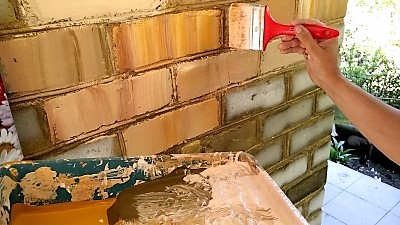
Along with modern heating systems that run on liquid fuel or gas, many people living in private houses prefer stoves and fireplaces.
At the same time, consumers choose for themselves not only functionality heating device, nand its exterior decoration.
Currently methods of registration ovens diverse. The most popular methods are plastering and universal painting ovens, decoration tiles or lining natural stone and tilesThe common criterion for all the listed finishing methods is their resistance to high temperatures.
Choosing paint for stoves and fireplaces
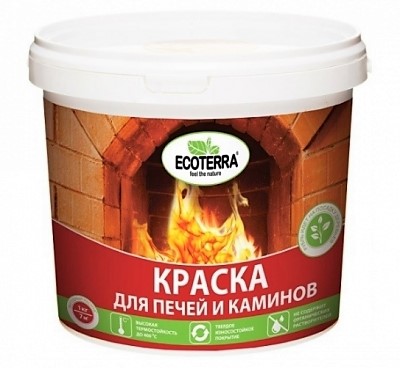
Basic requirements when choosing paint:
- Heat resistance. It is best to give preference to enamels whose upper temperature threshold is from 600 degrees and above.
- Anti-corrosion.
- Safety components (based on water or non-toxic substances).
- Associated substances. Because the heating element must be able to withstand temperatures higher 600 degrees, this means that the components must contain aluminum or zinc powder.
Requirements for heat-resistant paints
Thermal paint is used to paint the stoves. obvious advantages consist in the fact that it does not lose color when heated and great tolerates temperature fluctuations.
Heat-resistant paints form on the surface mobile and dense shell, non-flammable. They contain coloring pigments and high-molecular compounds that are resistant to heating.
Composition and features
Main and additional substances The following substances are included in the composition of the substance to ensure its heat resistance:
- Oxygen and silicon atoms when combined, they resist negative reactions from elevated temperatures.
- Organic resins affect stretchability, easy drying and strong adhesion to the surface.
- Bauxite makes the paint heat-resistant: the finish will withstand temperature loads without any problems up to 600 degrees Celsius.
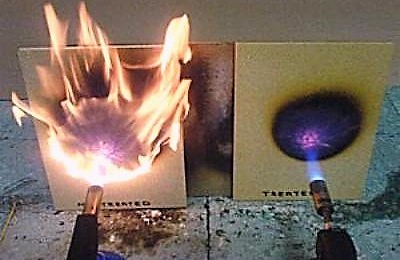
Main advantages heat-resistant paints and enamels:
- reliable and durable protection;
- wear resistance and easy cleaning from pollution;
- anti-corrosion means;
- do not crack or crumble;
- resistant to changes temperature.
Types of stove paints
The properties do not change depending on whether it is paint matte or else glossyIn this case, the choice depends only on the personal preferences of the buyer.
Heat resistant enamels differ from paints the following characteristics:
- the created shell is much stronger;
- application is carried out even in sub-zero temperatures.
Materials are being sold in different containersHeat-resistant substances are available in the form of an aerosol, a can or a small bucket.
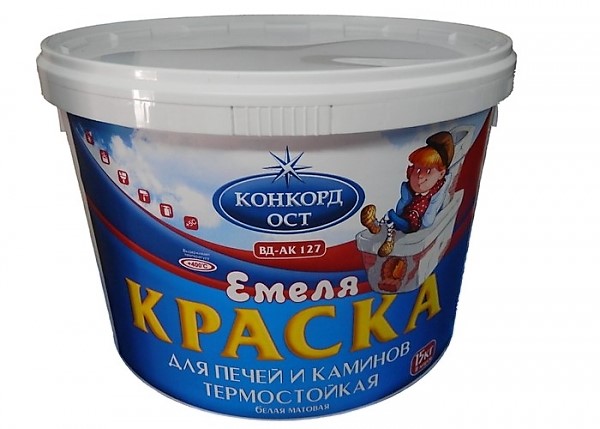
Photo 1. Heat-resistant paint Emelya from the manufacturer "Concord Ost", produced in a plastic bucket.
With the advent of aerosol Consumers are increasingly giving preference to paints, they have a number of advantages:
- uniform distribution over the entire surface;
- possibility to paint even in hard to reach places;
- don't need in preliminary preparation;
- easy and hassle-free application, spray can can be used by anyone, a person who is not trained in painting;
- spray from cans freezes almost instantly.
Paint in cans or buckets is chosen in cases where a large surface area needs to be painted.
Important! Painted in dark color the surface heats up much faster, and matte better transfers heat to the room.
Correct application
Heat resistant paint is recommended. apply with a regular brush, roller or spray gunOf course, if the spray can option is chosen, then there is no need for tools.
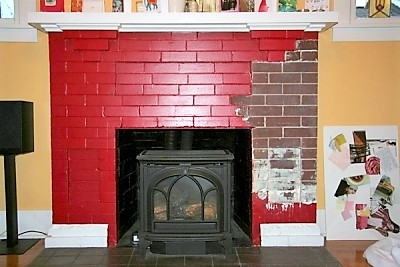
Only note: before coating the surface needs to be cleaned from dirt and degrease.
Before you cover a surface with paint from a can, you need to stir well and wait until small bubbles appear air.
In most cases, it is advisable to pre-treat the surface before painting. cover with primer, and the paint must be applied in several layers, waiting for each one to dry.
Thermal paint for the stove adheres tightly to the surface, which means that if applied correctly, it will serve for at least 10 years.
Useful video
Check out the video that demonstrates the process of painting a brick oven with Elcon light thermal paint.
The choice is yours
What color to choose for painting a stove or fireplace, whether to apply a pattern or just paint - these decisions are made individually. But the determining factor in this matter is how to choose the right enamel and how best to cover the surface with it, because a new design of a stove or fireplace can significantly refresh the interior of a room.
Fireproof paints on synthetic, silicon or silicone based will not only give the stove an aesthetic appearance, but will also ensure the practicality and durability of the structure.






Comments
Of course, I didn't paint the inside. But the outside appearance became more attractive, otherwise it looked ugly, like a piece of old rust.
- Hi-TEMP (manufacturer RJ London Chemicals);
- Certa;
- HIGH HEAT (manufacturer Rust-Oleum Corporation)